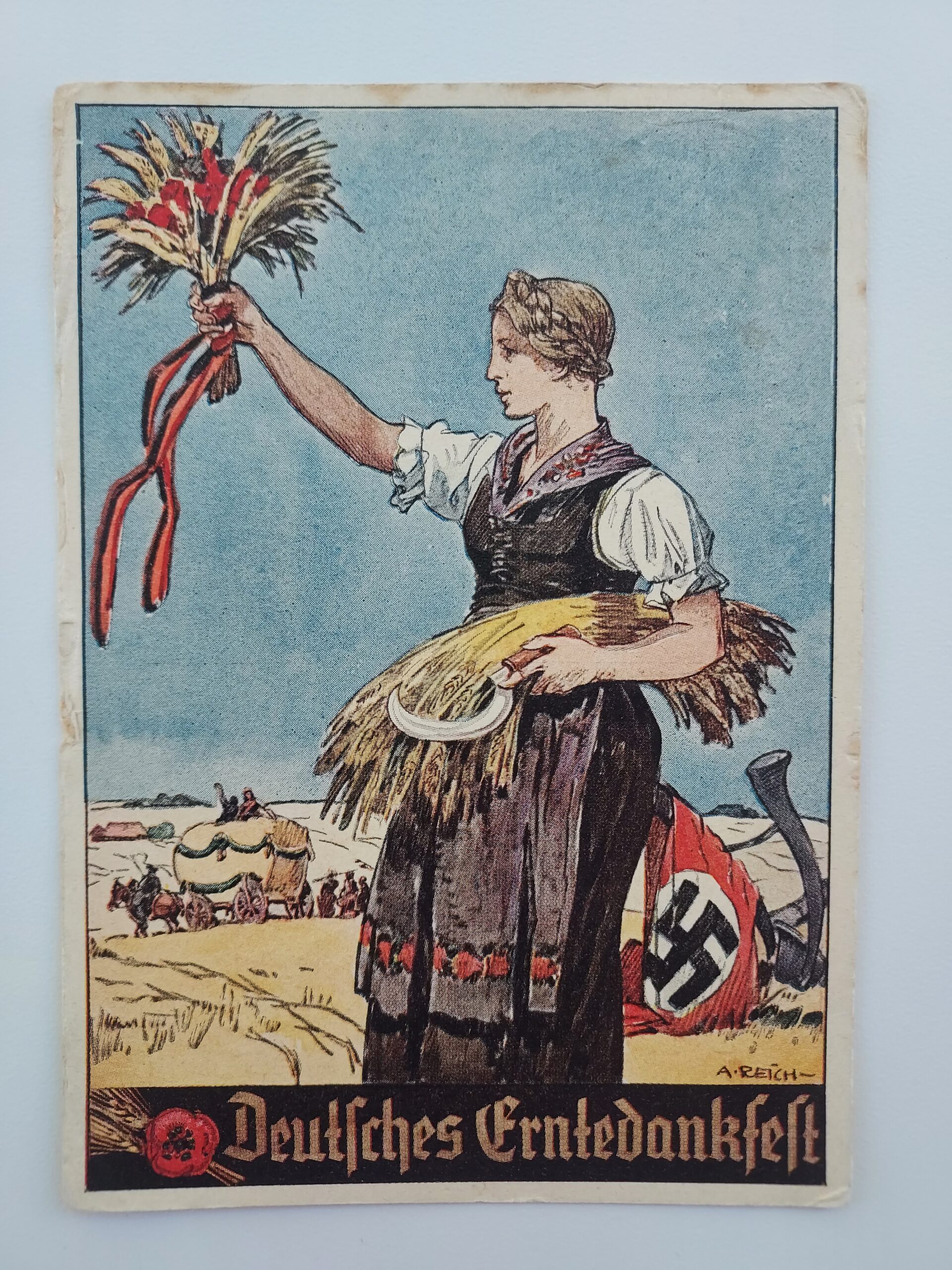Accession Number: 2022.02.4.2
Stamp: 1936 Otto von Bismarck, Deutsches Reich, 6 Pfennig (dark green)
Otto Eduard Leopold von Bismarck (1815-1898) was a conservative German-Prussian statesman who oversaw the unification of Germany. As the first Chancellor of the German Empire, he deployed Realpolitik (a political philosophy in which power can be used at any cost in preservation of national interest (Humphreys, 2014)) to enlarge his support base by strategically implementing small-scale policies popular with the working class (Kissinger, 1968). This technique coupled with his Kulturkampf (culture war) against the Catholic church and ethnic minorities (the Danes to the North, the Francophiles to the West, and the Poles to the East) created a strong backbone for German Nationalism (Taylor, 1967).
Postmark:
Bückeberg Hameln 4 10. 36 – 18
Festpostkarte Bückeberg — Erntedankfest 1936
Ernte Danktag
Bückeberg Hameln [October] 4, 1936 – 6pm
Bückeberg holiday postcard — Thanksgiving 1936
Harvest appreciation day
Historical background:
The Reich Harvest Thanksgiving Festival (Das Reichserntedankfest) was a holiday created by the Minister of Public Enlightenment and Propaganda Joseph Goebbels that ran from 1933 to 1937. The festival was a cooption of a traditional Christian Thanksgiving holiday popular with peasantry for the furtherance of the Nazi ideal Blut und Boden (Blood and Soil) (Hameln Association, 2023). Blut und Boden is a nationalist slogan combining the white supremacist idea of pure “blood” with the nationalist romanticization and idealization of “farmer peasants” (Grunberger, 1995). To the Nazis, farming upheld natural “rural values” which were seen as superior to weaker “urban culture,” seen as having Jewish influence (Koonz, 2003). German peasants reacted positively to the festival, with attendance reaching 1.2 million in 1937 (Hameln Association, 2023). In 1936, the festival took place on October 4th, the same date that this postcard is postmarked.
References:


![Herrn Anton Heidmann Rheinhausen-Ndrhein [abv. Niederrhein] Friedrich-Alfred-Hütte Liebe geehrtes H. Heidmann, Recht herz. [abv. herzliche] grüße erlaubt sich von Bückeberg zu senden Rüd schuz & frau Sir Anton Heidmann Rheinhausen-Ndrhein [abv. Niederrhein] Friedrich-Alfred-Hütte Most honorable Sir Heidmann, Utmost regards to you from Bückeberg Rüd Schuz & Wife](https://s45055.pcdn.co/centers/holocaust-and-genocide-studies/www-content/blogs.dir/7/files/sites/180/2024/09/20240911_102602-scaled.jpg)